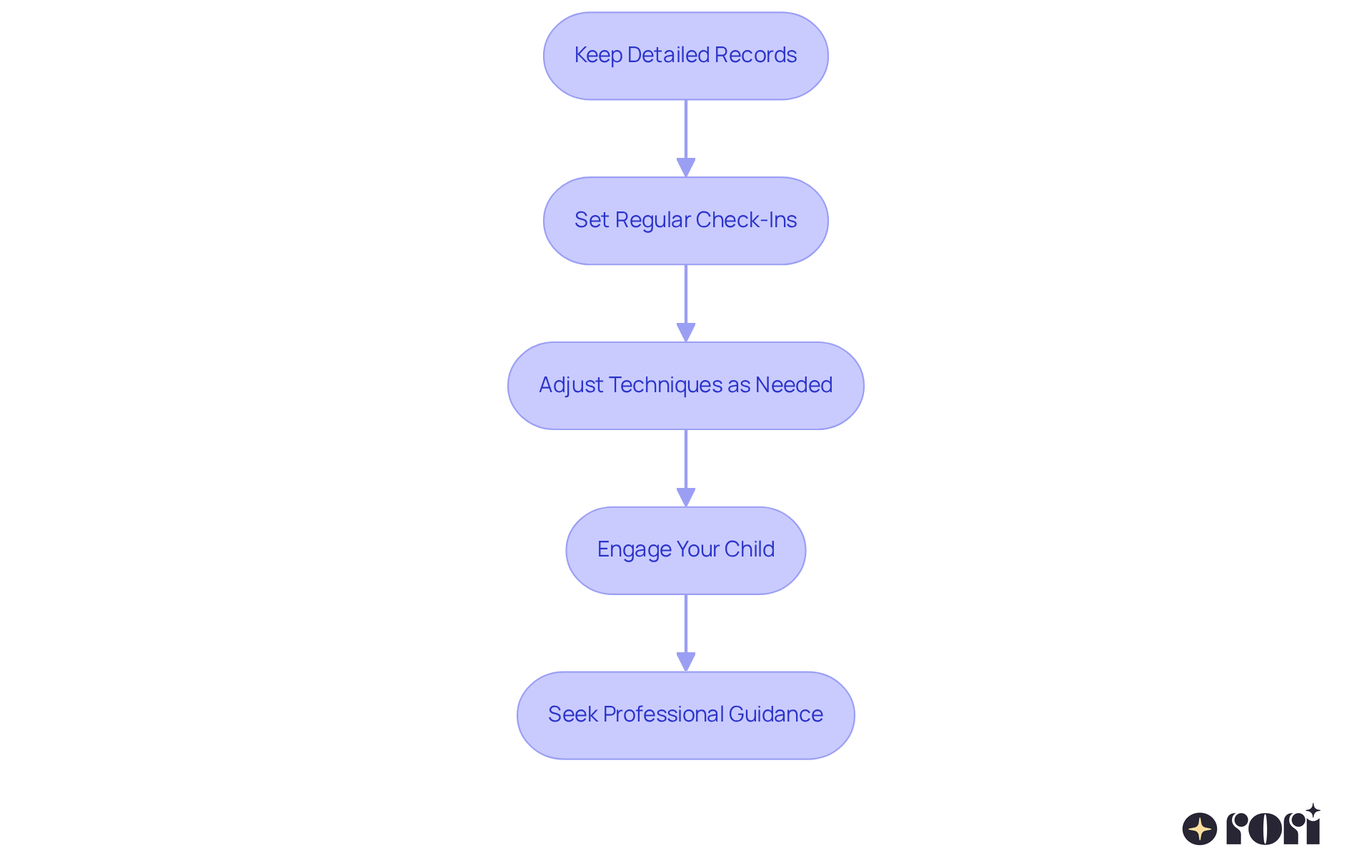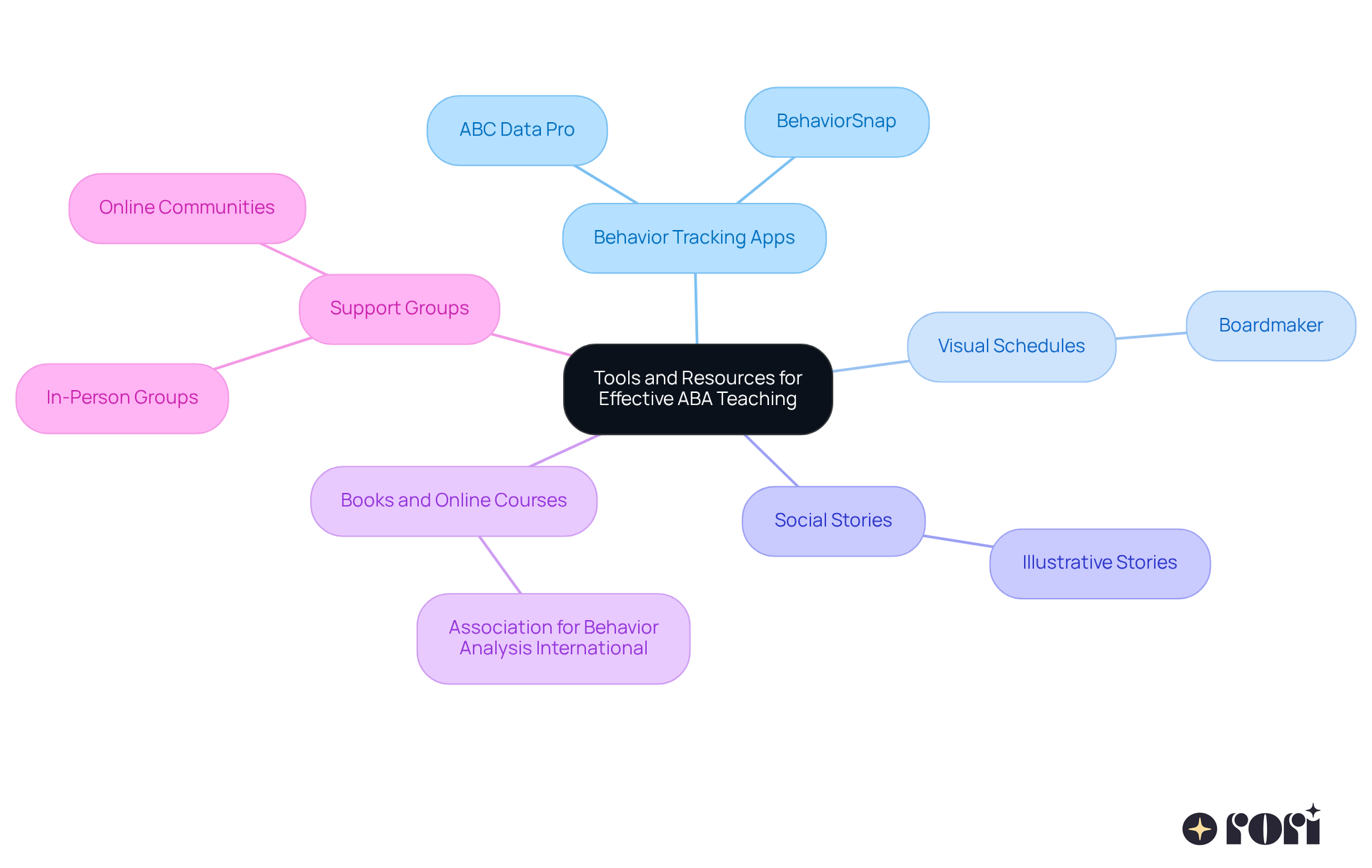This article offers a friendly guide for parents on how to teach Applied Behavior Analysis (ABA) techniques to their children. It highlights the importance of reinforcement, modeling, and consistent practice in a way that feels relatable and supportive. By sharing specific actions—like identifying target behaviors, setting clear goals, and monitoring progress—this piece helps parents create a structured learning environment that encourages positive behavioral outcomes.
Let’s dive into this together! Imagine identifying those key behaviors you want to address. Setting clear goals can feel daunting, but it’s a crucial step toward success. Monitoring progress not only keeps you informed but also motivates your child, making the learning process a shared journey.
By outlining these strategies, the article empowers parents to feel confident in their approach. Remember, you’re not alone in this! We’re here to help you every step of the way. Your efforts can foster a nurturing space for your child to thrive, and together, we can make a difference!
Understanding a child's behavior can often feel like deciphering a complex puzzle, especially for parents navigating the world of Applied Behavior Analysis (ABA). This scientifically-backed approach not only helps us see how actions are influenced by various factors but also provides caregivers with effective strategies to encourage positive changes.
As parents embark on this journey, they might wonder: how can they effectively implement these techniques to support their child's growth? By exploring step-by-step strategies, monitoring progress, and utilizing valuable resources, caregivers can transform challenges into opportunities for learning and development. Let’s explore this together!
Applied Behavior Analysis (ABA) is a fascinating scientific method that helps us understand actions and how they’re influenced by the environment. Let’s dive into some key concepts that can really make a difference for you:
By understanding these ideas, you can better identify what affects your child’s behavior and effectively teach ABA. Rori Care’s behavior care engine takes this a step further by conducting functional behavior analyses for target behaviors and skills, generating automatic progress reports for clinician review. This involvement not only empowers you as caregivers but also leads to informed decision-making and better behavioral outcomes for your little ones.
So, let’s explore this together! We’re here to help you every step of the way!

Teaching your child can be a rewarding journey when you teach ABA. Here are some friendly, step-by-step strategies to guide you:
For extra support, why not consider booking a FREE Autism Consultation with Rori Care's Board Certified Behavior Analyst? This consultation can help teach ABA techniques through personalized guidance tailored to your child’s unique needs, assisting you in effectively navigating any challenges you might encounter. Let’s explore this together!

To ensure your ABA strategies are effective, let’s explore some steps for monitoring progress together:
Keep Detailed Records: It’s crucial to document your child's behaviors, the context in which they occur, and the reinforcement provided. This data helps you spot patterns and trends. At Rori Care - ABA Therapy, we support automatic data gathering during sessions, making it easier to track your little one's progress. Our clinical team is always here for your child, ensuring therapy flows smoothly. Plus, all information is securely stored, anonymized, and erased after analysis, so you can focus on your child's development.
Set Regular Check-Ins: Consider scheduling weekly or bi-weekly reviews to evaluate your child's progress toward their goals. This gives you a chance to celebrate successes and identify areas that might need a little extra attention.
Adjust Techniques as Needed: If something isn’t working, don’t hesitate to tweak it! For example, if a specific reinforcement isn’t motivating your child, try a different reward that might resonate better.
Engage Your Child: Encourage your child to participate in the monitoring process by discussing their feelings about the strategies in place. What do they enjoy? What do they find challenging? Their input can be invaluable!
Seek Professional Guidance: If you’re feeling uncertain about your child’s progress or how to adjust techniques, reach out to a BCBA or an Autism Care Specialist for personalized advice. Empowering caregivers to teach ABA is key to supporting children’s behavioral goals.
We’re here to help you every step of the way!

To support your ABA teaching efforts and enhance the guidance provided by Rori Care, let’s explore some helpful tools and resources together:
By leveraging these tools and resources, you can teach ABA effectively and create a supportive learning environment for your child. Together, we can ensure significant progress in their development!

Understanding and implementing Applied Behavior Analysis (ABA) can truly enhance the learning and development of our children. By grasping the core principles of behavior, reinforcement, and the various strategies outlined, parents are empowered to create a nurturing environment that fosters positive behaviors and skills.
This article dives into essential aspects of ABA, from identifying target behaviors and setting clear goals to monitoring progress and adjusting techniques as necessary. Each step in the process is designed to equip parents with practical tools and resources, ensuring they can confidently support their child's unique learning journey. Utilizing behavior tracking apps, visual schedules, and engaging in community support can further enrich the ABA teaching experience.
As parents embark on this rewarding journey, embracing the insights and strategies shared can lead to meaningful changes in their child's behavior and overall well-being. The commitment to understanding and applying ABA not only nurtures individual growth but also strengthens the family dynamic, paving the way for a brighter future. Engaging with resources like Rori Care and connecting with fellow parents can provide invaluable support, making the path to success in ABA teaching both achievable and fulfilling. Let’s explore this together!
What is Applied Behavior Analysis (ABA)?
Applied Behavior Analysis (ABA) is a scientific method that helps understand actions and how they are influenced by the environment.
What does "behavior" mean in the context of ABA?
In ABA, behavior refers to any observable action or response made by an individual, focusing on what can be seen.
What is reinforcement and how does it work?
Reinforcement is a process used to increase the chances of a behavior occurring again. Positive reinforcement involves giving a reward after a desired action, while negative reinforcement means removing something unpleasant.
How is punishment defined in ABA?
Punishment aims to reduce the likelihood of a behavior being repeated. It can be positive, by adding an unpleasant consequence, or negative, by removing something enjoyable.
What is an antecedent in ABA?
An antecedent is the event or condition that occurs before an action, which can trigger that action.
What is a consequence in the context of ABA?
A consequence is what follows an action and can influence whether that action happens again.
How can understanding these concepts help caregivers?
By understanding the key concepts of ABA, caregivers can better identify what affects a child’s behavior and effectively teach ABA strategies.
What tools does Rori Care provide to support behavioral analysis?
Rori Care’s behavior care engine conducts functional behavior analyses for target behaviors and skills, generating automatic progress reports for clinician review, which empowers caregivers and leads to informed decision-making.